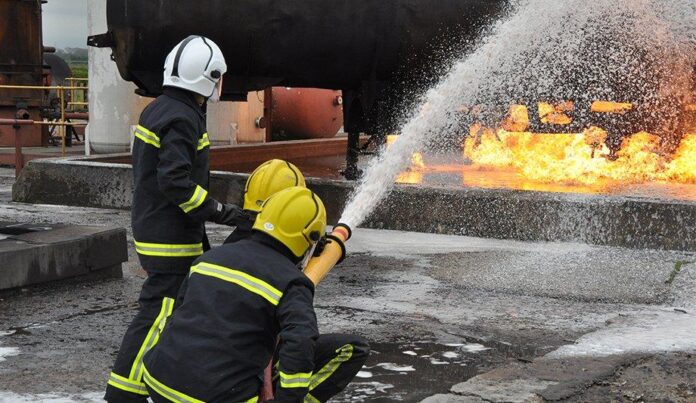The firefighting foam industry is undergoing a significant transformation. Aqueous film-forming foam (AFFF), once a trusted firefighting tool, is now under inspection. It contains per- and polyfluoroalkyl substances (PFAS) that pose risks to both the environment and firefighter health.
Amidst this evolving landscape, the industry is navigating a challenging terrain of change. Regulatory bodies are reevaluating the safety and environmental implications of AFFF. According to JD Supra, these regulations involve restrictions in four general areas: storage restrictions, usage restrictions, reporting requirements, and limitations on personal protective equipment.
These shifts in regulatory focus are not merely abstract; they have tangible consequences for the industry’s practices, products, and obligations. In this article, we will highlight the impact of regulatory changes on the firefighting foam industry.
The Environmental Concern
Environmental concerns are becoming increasingly central in regulatory discussions surrounding firefighting foam. The persistence of PFAS in the environment has led to worries about their long-term impact on ecosystems.
According to the CDC, these chemicals do not readily break down in nature, leading to contamination of waterways and soil. This can harm aquatic life and terrestrial ecosystems. Regulatory changes are prompting manufacturers to explore innovative formulations that do not rely on PFAS.
With mounting evidence of the environmental hazards posed by PFAS-containing firefighting foam, regulatory bodies are pushing for more eco-friendly alternatives. Manufacturers are under pressure to invest in research to create firefighting foams that are not only effective but also biodegradable.
Protecting Firefighter Health
Regulatory changes are increasingly focused on protecting firefighter health in the face of potential risks associated with AFFF. According to ConsumerNotice.org, firefighters who regularly use AFFF face concerns related to PFAS exposure, including links to various health issues. This includes cancer, immune system disorders, and reproductive complications.
To address these concerns, fire departments are implementing stringent measures to monitor and mitigate health risks. This includes regular health screenings for firefighters and providing training on proper handling and disposal of AFFF.
Alternatives and Innovations
Innovation is at the forefront of the firefighting foam industry. Regulatory changes demand a shift towards eco-friendly and health-conscious alternatives to traditional firefighting foam. Manufacturers and researchers are working tirelessly to develop novel firefighting foam formulations that prioritize both effectiveness and reduced environmental impact.
One of the key areas of innovation involves finding substitutes for PFAS, the persistent chemicals found in traditional AFFF. These substitutes aim to eliminate the environmental and health risks associated with PFAS. Research is yielding promising results, with new formulations that are biodegradable and do not pose a threat to ecosystems.
Responsible Use and Disposal
Responsible disposal practices for firefighting foam are taking center stage in response to regulatory changes aimed at mitigating environmental contamination. Fire departments are under increasing pressure to adopt practices that prevent the discharge of AFFF into waterways and soil. This reduces the long-lasting effects of PFAS contamination.
One critical aspect of responsible use is the proper training of firefighters in AFFF application. Regulations demand that firefighters receive training on the correct handling and deployment of AFFF to minimize the risk of spills. This training emphasizes the importance of using the right equipment and techniques to contain and control the foam.
Legal Scrutiny and Accountability
The legal landscape surrounding firefighting foam has undergone significant changes in response to growing awareness of its potential risks. Regulatory changes are accompanied by increased legal scrutiny and accountability for manufacturers and users of AFFF. According to TorHoerman Law, there has been a surge in firefighting foam lawsuits across the U.S. in recent months.
Manufacturers are facing mounting legal challenges, leading to significant financial consequences. Lawsuit allegations include failure to warn about risks such as AFFF foam cancer and other health issues. The legal landscape is shifting to hold manufacturers accountable for the health and environmental consequences of their products.
According to NPR, 3M recently proposed a $10.3 billion settlement in the firefighting foam lawsuit. If approved by the court, this settlement could total up to $12.5 billion and serve as a precedent for similar legal actions.
Transparency and Public Awareness
Regulatory changes are driving a push for greater transparency and public awareness regarding the potential risks associated with AFFF. Manufacturers are now required to provide clearer information about the dangers of AFFF, increasing public awareness and fostering informed decision-making.
Transparency efforts include labeling requirements that specify the presence of PFAS in AFFF products. Firefighters must be equipped with this information to make informed choices about the use of firefighting foam.
Collaborative Industry Response
The firefighting industry has responded to regulations and heightened awareness of firefighting foam’s impact with a collaborative approach. Manufacturers, fire departments, and environmental groups are joining forces to tackle challenges together and seek sustainable solutions.
These collaborative efforts concentrate on various essential areas. Manufacturers are actively working with researchers to create alternative firefighting foam formulations that are both effective and environmentally friendly. This research collaboration is crucial for discovering PFAS substitutes and enhancing the overall safety of firefighting foams.
Final Word
The firefighting foam industry is undergoing a transformation in response to evolving regulations and heightened environmental and health concerns. These changes are driving innovation towards eco-friendly alternatives and demanding responsible use and disposal practices.
The industry faces increased transparency obligations, while collaborative efforts are fostering a collective commitment to finding sustainable solutions. Ultimately, the regulatory changes are reshaping the firefighting foam landscape while highlighting the health risks associated with the foam.
































